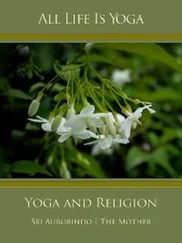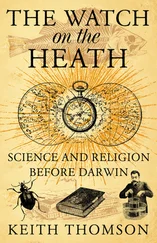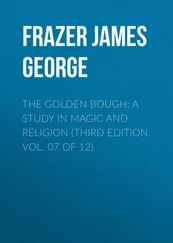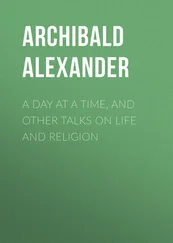Vikernes, Varg - Varg Vikernes - Sorcery and Religion in Ancient Scandinavia
Здесь есть возможность читать онлайн «Vikernes, Varg - Varg Vikernes - Sorcery and Religion in Ancient Scandinavia» весь текст электронной книги совершенно бесплатно (целиком полную версию без сокращений). В некоторых случаях можно слушать аудио, скачать через торрент в формате fb2 и присутствует краткое содержание. Жанр: Старинная литература, на английском языке. Описание произведения, (предисловие) а так же отзывы посетителей доступны на портале библиотеки ЛибКат.
- Название:Varg Vikernes - Sorcery and Religion in Ancient Scandinavia
- Автор:
- Жанр:
- Год:неизвестен
- ISBN:нет данных
- Рейтинг книги:3 / 5. Голосов: 1
-
Избранное:Добавить в избранное
- Отзывы:
-
Ваша оценка:
- 60
- 1
- 2
- 3
- 4
- 5
Varg Vikernes - Sorcery and Religion in Ancient Scandinavia: краткое содержание, описание и аннотация
Предлагаем к чтению аннотацию, описание, краткое содержание или предисловие (зависит от того, что написал сам автор книги «Varg Vikernes - Sorcery and Religion in Ancient Scandinavia»). Если вы не нашли необходимую информацию о книге — напишите в комментариях, мы постараемся отыскать её.
Varg Vikernes - Sorcery and Religion in Ancient Scandinavia — читать онлайн бесплатно полную книгу (весь текст) целиком
Ниже представлен текст книги, разбитый по страницам. Система сохранения места последней прочитанной страницы, позволяет с удобством читать онлайн бесплатно книгу «Varg Vikernes - Sorcery and Religion in Ancient Scandinavia», без необходимости каждый раз заново искать на чём Вы остановились. Поставьте закладку, и сможете в любой момент перейти на страницу, на которой закончили чтение.
Интервал:
Закладка:
On the 25 thday, that is when the Sun set on the 24 thday of Himinbjörg, the Yule tide began, with the celebration of the Winter Solstice. The queen (or lady of the house) walked three times with the Sun around the house with a wand, a bough from the pine tree, a tree dedicated to Heimdallr, and declared that all the elves (i. e. the spirits of the dead) were welcome. The burial mounds were often built so that at Sunrise on the Winter Solstice the Sunlight entered the innermost chamber and lit it up, waking up the elves, just like Freyr had woken up the seeds in the ground when he sent the Sun beams to propose to Gerð ("fenced-in-field"). The elves (original meaning of the word is "white") came with Heimdallr, the god who had been reborn as Váli on the first day of the year. He took the gifts he had received from the dead (i. e. that he had found in the burial mound) and in the silence of the night he gave them back to the living (i. e. the reborn dead). These items were seen as the gifts from the elves (the spirits of the dead), because the gifts came from the dead – the dead relatives of the living. So the reborn dead regained their properties: things they had owned in past lives.
When the living for some reason didn't deserve these gifts, the Óðinn impersonators returned to the grave mounds and placed the gifts in the barrow opening.
The spirits of the dead were called elves ("white") because the dead were buried in white garments and because the seeds returned after winter in the form of white flowers in the meadow or as fair crops, but most importantly because they were free from guilt after having crossed the river of forgetfulness. They had forgotten everything, all their mistakes in life, on their way to Hel. Baldr was called "the white god" because he was so innocent, but Heimdallr too was called "the white god", because he was still dressed up like a dead person, in white clothes, and because after spending time in Hel he had the colour of the dead. At this time he had long hair, beard and nails too, because he had not been allowed to cut them since Halloween. Heimdallr led the procession of elves because he had once been assigned by Óðinn to create a better man on Earth. He visited three brides, great grandmother, grandmother and mother, and fathered three sons: Þræll ("slave", original meaning of the word is "runner"), Karl ("free man") and Earl ("noble", "man"). Only the latter was seen as worthy by Óðinn, and Heimdallr was assigned to teach and train him, and keep an eye on him and his family. Every year, on the Winter Solstice, he visited Earl and his kin, from his home over the North pole, to tell them how they were doing.
To allow Heimdallr access to the home everyone should leave their doors unlocked on the Winter Solstice. To make sure he would not have to travel on an empty stomach they placed a bowl of porridge on the table in the living room. In addition to that it was illegal to keep any animals with claws inside this night, so that Heimdallr wouldn't wake up any sleepers when dogs began to bark and other animals made noise when he entered. The gifts from the elves were delivered to his good children (since mankind was considered to be his children), and ashes from the grave were delivered to the bad children. He could know who was good and who was bad, because he was able to see the entire world from his throne in Heaven, over the North Pole, and his hearing was so good he could hear the grass grow. He heard and saw everything.
There were many traditions for the Yule eve. You had to use seven different kinds of wood in the fire that night, one for each day of the week. Moreover, you had to eat meat from animals associated with fertility, such as the boar, and you had to sleep on the floor – to allow the elves to sleep in the beds. The decorative food was not to be eaten by the living, because this was for the dead (the elves), and (what was left of) it was not to be eaten until the 11 thday of Søkkvabekkr (a day known as “The Horse of Hel”).
Between the Winter Solstice and the Day of Eldbjørg ("fire-rescue") the dead spirits, accompanied by Heimdallr, Loki, Skaði, Þórr and Óðinn, travelled around, visiting all the villages and farms, fighting the spirits of winter. The shadows of Hel and Höðr/Ullr (the spirits of winter) had also returned when the elves/spirits of the dead had been called upon to rise from the grave. The gods ran or rode through the night, not naked this time, but dressed in white garments and furs, screaming and shouting, armed with swords and flaming torches, to fight the spirits of winter. The men and women acted out the myths this way, and this tradition was the gods who lit bonfires in the forest to burn the feathers of Suttungr and Þjazi, and by doing so killed the winter spirits. Just like in the 9 days after Halloween, it was a religious obligation to provide food and drink to this party. On the 7 thday of Landviði came the final showdown between the gods and the shadows, the summer and the winter spirits. This was known as Ragnarök, and is still celebrated today as the modern New Year's Eve, the 1 stof January.
The road between Heaven and Hel had opened up, so the spirits of the dead could roam freely into the world and meet their shadows in battle, on a field called Vígriðr ("ride of the dead", "weighing of the dead"). Höðr had already been killed, and the bear lay peaceful in his winter lair, so what were they actually fighting against?
Höðr was a mysterious bear and wolf deity, a winter spirit, and was called Fenrir ("fenced-in-plague") when he attacked on Ragnarök. He was also called Mánagarm ("Moon swallower"). They say he was blind, but in reality his image was based on the sorcerer, dressed in robes and wearing a hood or large hat, who climbed the oak on the Autumnal Equinox and cut down the mistletoe and thus killed Baldr. The sorcerer wanted this bough because he needed it to rule the world, but the religious men and women accused him of being the reason winter came in the first place. They believed he killed summer by doing this!
Höðr too rose from the dead when called upon in the Yule tide, and charged on the field of battle, to fight Óðinn and the other gods.
Ragnarök is known from the myths as well. All the powers went to war against each other. Óðinn was killed by Höðr, who in this context was in shape of a giant wolf, Fenrir, i. e. the berserks. Þórr killed Jörmungandr, the mistletoe, but took only nine steps before he too died, from the poison of the worm. The light god Freyr ("spare", "free", "love") fought against the darkness, against Surtr ("black"), but was unarmed and fell. This was the Sunlight inside the burial mound on the Winter Solstice that eventually had to give way to the darkness. Loki faced Heimdallr and they killed each other; lightning against tree. Only ash was left after them. Týr ("beam") met the mighty dog guarding the entrance to Hel and they killed each other too. Víðarr was the most important hero in this drama; he killed Höðr/Fenrir and thus avenged the killing of Óðinn. He placed his big boot inside the fire-breathing mouth of the wolf and tore it in half, but also burned his foot in the process.
The adults split into two groups in this festival. One group was to represent the elves and the evergreen forest, the summer that refused to give in to winter, and was led by the king. They were dressed in white dresses or skirts, adorned with branches from Víðarr's sacred spruce. The other group was to represent the shadows and darkness, winter trying to end all warmth and life, and was led by the prince. They were dressed in furs and black dresses or skirts. The spirits of nature were originally seen as hermaphroditic, and the participants represented them, so the men had to wear dresses and the women shirts.
The army of summer was armed with torches, saxes, sickles or scythes, and the army of winter threw ash. The battle was called a sword dance and was a ritual intended to ensure that summer prevailed over winter. If winter won this symbolic battle the crowd would shout things at the winter warriors, throw things at them and perhaps even intervene to ensure that summer prevailed. Although it was only a symbolic battle summer had to win. Even a symbolic victory for winter would be disastrous. That's how things are when you believe in sorcery...
Читать дальшеИнтервал:
Закладка:
Похожие книги на «Varg Vikernes - Sorcery and Religion in Ancient Scandinavia»
Представляем Вашему вниманию похожие книги на «Varg Vikernes - Sorcery and Religion in Ancient Scandinavia» списком для выбора. Мы отобрали схожую по названию и смыслу литературу в надежде предоставить читателям больше вариантов отыскать новые, интересные, ещё непрочитанные произведения.
Обсуждение, отзывы о книге «Varg Vikernes - Sorcery and Religion in Ancient Scandinavia» и просто собственные мнения читателей. Оставьте ваши комментарии, напишите, что Вы думаете о произведении, его смысле или главных героях. Укажите что конкретно понравилось, а что нет, и почему Вы так считаете.












